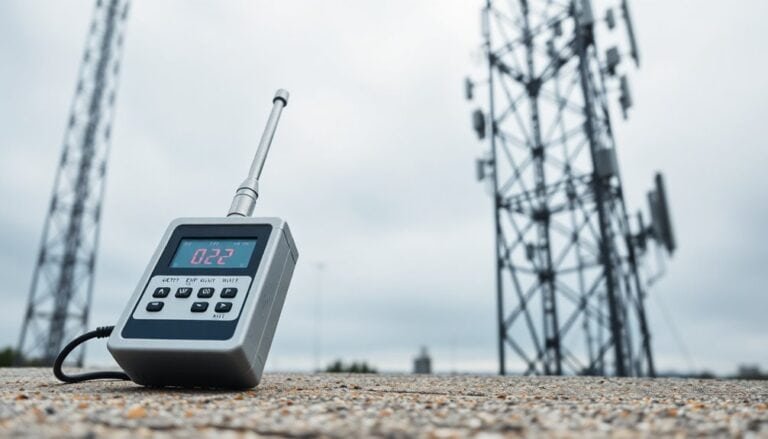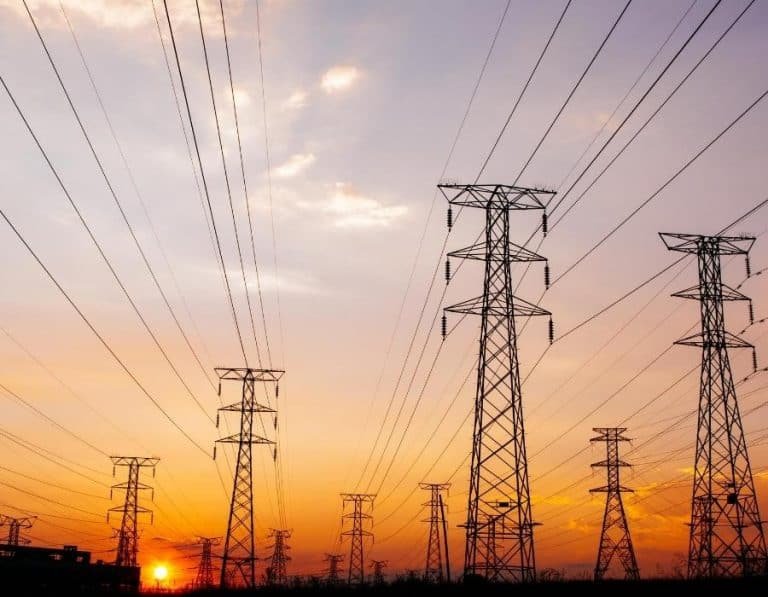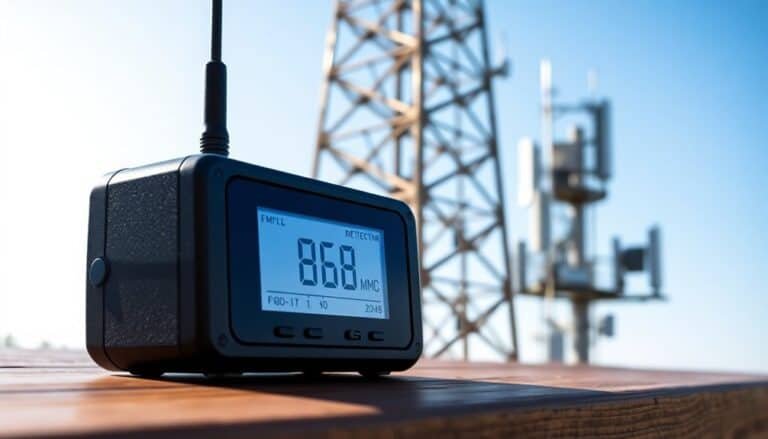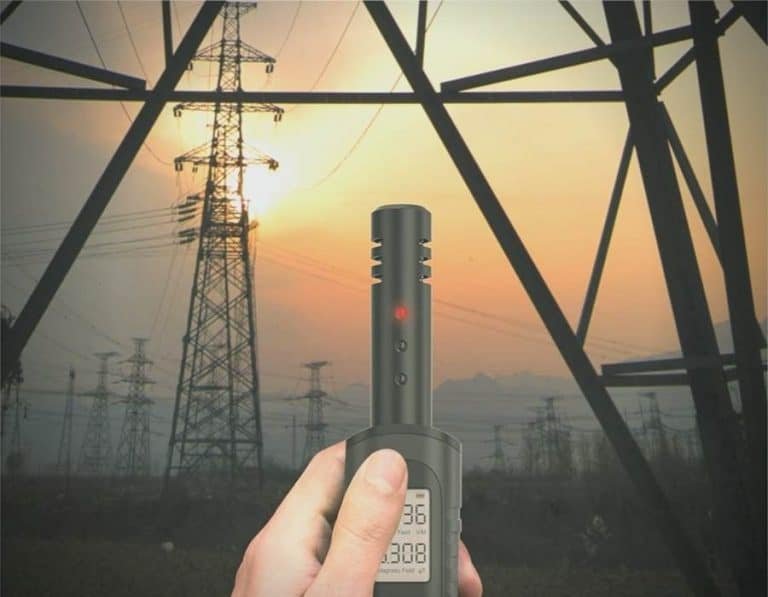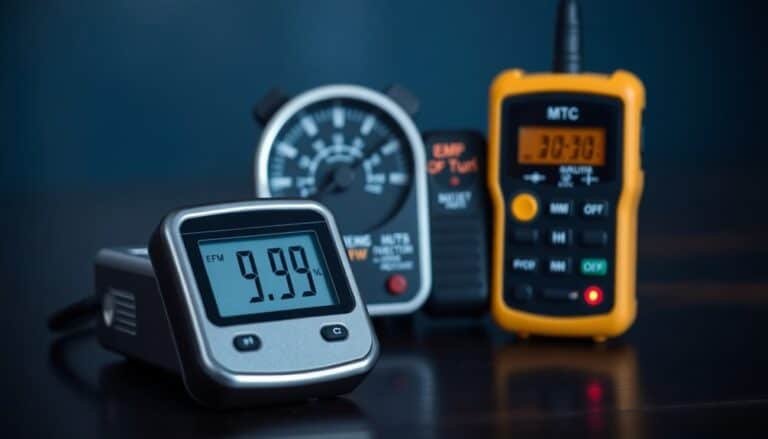How to Measure Dirty Electricity at Home
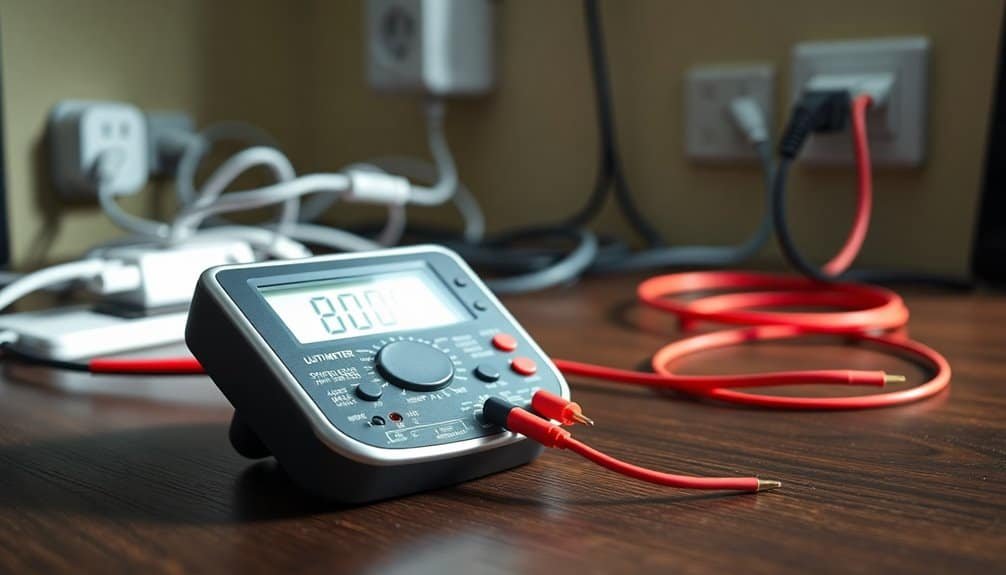
To measure dirty electricity at home, use tools like the Graham-Stetzer Meter or Alpha Labs Line EMI Meter for readings on electrical pollution. Systematically assess each room, especially high-activity areas like kitchens and offices, and use an AM Radio to detect electromagnetic interference.
Record baseline levels and pinpoint noise sources, considering filters if readings are high. Explore reduction strategies and maintenance tips for further guidance.
Disclaimer: As an affiliate, I may collect a share of sales from the links on this page.
Understanding Dirty Electricity
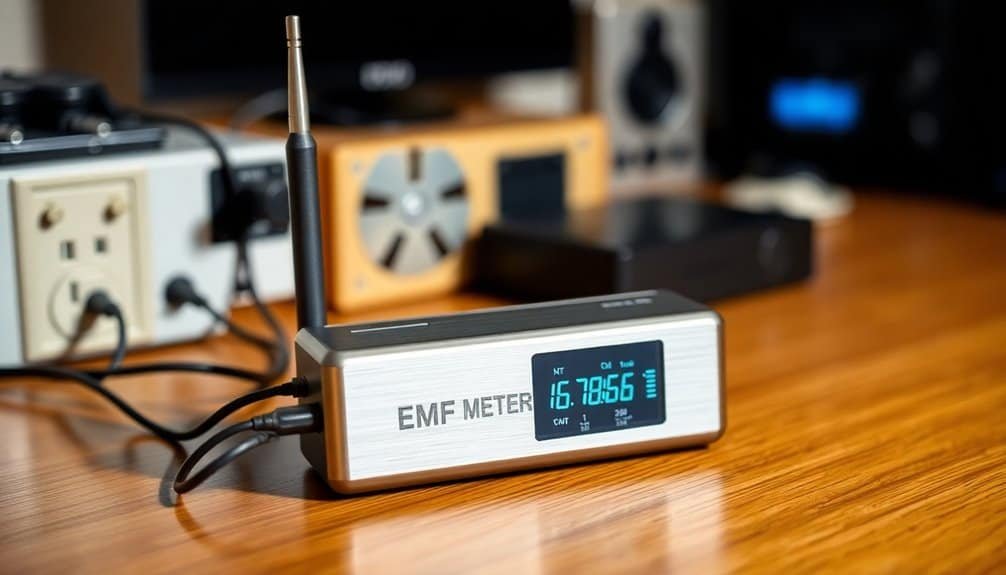
When you turn on a modern appliance, you mightn’t realize that it can create what’s known as dirty electricity. This term refers to electrical pollution or electromagnetic interference caused by irregular surges of energy and unwanted frequencies. Modern devices manipulate standard AC electricity, resulting in brief voltage changes. These changes distort the pure sine wave of clean AC signals, leading to decreased power supply efficiency. Symptoms include flickering lights and equipment noise, while the terminology often includes line noise or electrical noise. Such disturbances can create unusable reactive energy, impacting your overall electrical experience at home. Addressing dirty power is essential for improving the efficiency and longevity of your electrical systems, as clean electricity ensures optimal performance of electronic devices.
Common Sources of Dirty Electricity
Dirty electricity can originate from a variety of everyday appliances and devices, making it essential to identify them for better energy quality.
Light bulbs like CFLs and LEDs, along with microwave ovens, all emit electrical noise. Air conditioners are among the worst offenders for generating dirty electricity due to their operational design.
Switch mode power supplies in phone chargers contribute as well.
You’ll find that high-speed appliances, like blenders and hair dryers, increase electrical noise.
Many electronics, such as computers and Wi-Fi routers, also add to this issue.
Even smart devices, including SMART meters and solar inverters, can generate dirty electricity. Dirty electricity is caused by electrical devices manipulating current, highlighting the importance of recognizing these sources to help you mitigate their impact on your home environment.
Tools for Measuring Dirty Electricity
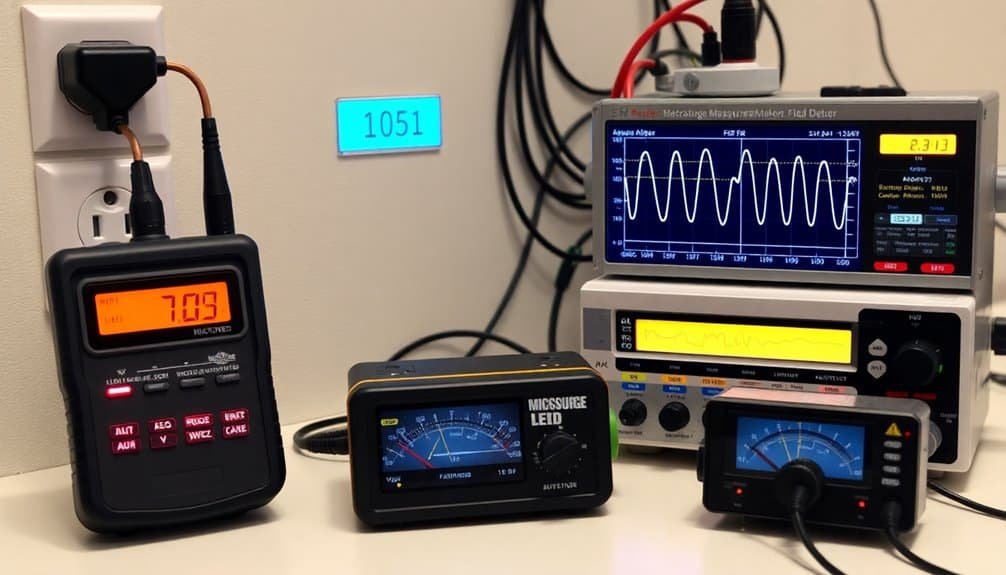
Measuring dirty electricity requires the right tools to assess electromagnetic interference (EMI) effectively. An AM Radio can detect EMI by tuning to low and high frequencies for preliminary analysis.
The Graham-Stetzer Meter provides quantifiable data in GS units, ideally below 50, for higher accuracy.
For detailed analysis, the Alpha Labs Line EMI Meter monitors electrical lines, while the Sercalia Dirty Electricity Meter covers frequencies from 3 kHz to 10 MHz, ensuring thorough assessments.
Finally, the EMF Dirty Electricity Meter targets high-frequency pollution and requires proper calibration for accurate readings, making it essential for precise measurement of dirty electricity. In conjunction with these tools, the use of Greenwave filters can further reduce dirty electricity levels in your home for improved health and safety.
Measurement Methods Explained
To effectively measure dirty electricity, you need a structured approach that encompasses preparation, protocols, and precise techniques.
Start by identifying external sources like cell towers that may affect your readings. Next, assess your home wiring, focusing on areas with high electrical activity.
Choose tools, such as AM radios and plug-in EMI meters, to collect data. Begin external measurements, then take internal readings, documenting each result.
Systematically divide your home into sections to pinpoint sources. Establish baseline readings to understand the average dirty electricity levels present. This will help you determine if you need to install dirty electricity filters to mitigate the identified issues.
This methodical process will help you accurately assess the pollution in your electrical environment.
Interpreting Measurement Readings
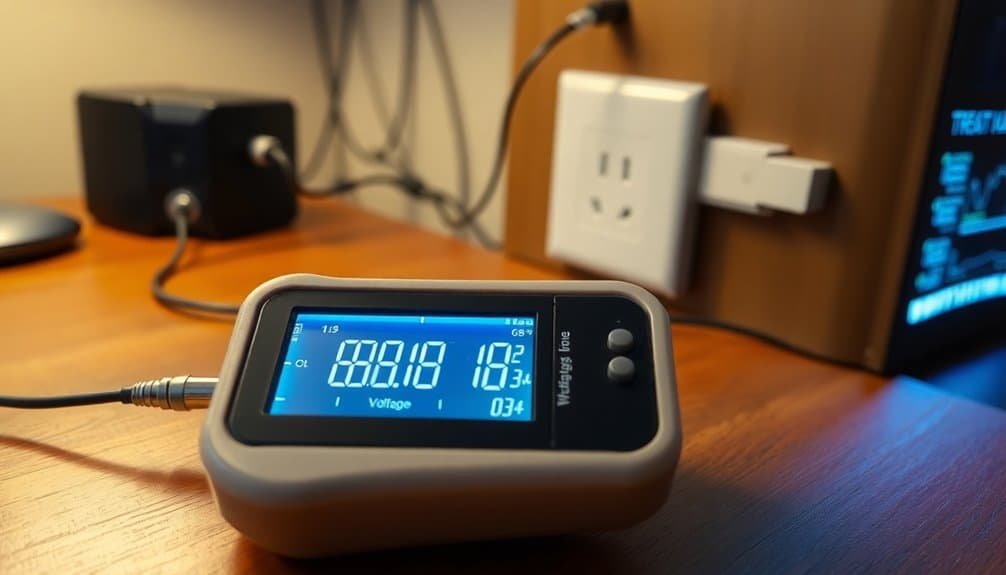
Understanding your measurement readings is essential for effective assessment of dirty electricity levels. Start by establishing a baseline, as this provides a reference for future comparisons.
Your readings, measured in Graham-Stetzer units or millivolts, should ideally be below 50 units. Use devices like Stetzer or Alpha Labs meters to analyze frequencies between 10 kHz and 10 MHz.
Compare measurements with devices turned off to identify internal sources effectively. Pay attention to sound indicators; louder sounds indicate higher interference levels.
Steps for Effective Measurement
When measuring dirty electricity, a systematic approach guarantees reliability and accuracy. Start by choosing the right equipment, like a Graham-Stetzer Meter for precise readings or an AM radio to identify sources.
Next, prepare your environment by turning off unnecessary appliances to reduce interference.
- Conduct measurements at different times for consistency.
- Take readings at various points in the home to identify patterns.
- Document all findings for future reference and analysis.
Following these steps confirms you collect quality data, allowing for a better understanding of dirty electricity presence in your home environment.
Reducing Levels of Dirty Electricity
Reducing levels of dirty electricity is essential for improving your home’s electrical environment.
Start by switching out CFL bulbs for LED or incandescent ones, as they emit less electrical noise. Avoid using dimmer switches; instead, opt for standard on/off switches to minimize interference.
Limit Wi-Fi usage by connecting through Ethernet and turning off routers when not in use. Utilize shielded cords to cut down on EMF exposure.
Finally, unplug devices when they’re not in use. These measures effectively decrease dirty electricity, enhance appliance performance, and lessen your exposure to electromagnetic fields, contributing to a healthier living space.
Regular Monitoring and Maintenance
Monitoring dirty electricity in your home serves as a proactive approach to ensuring a safe and efficient electrical system.
Regular oversight enhances early detection of issues, optimizes budget allocation, and improves safety.
To maintain effective monitoring, consider these strategies:
- Conduct daily checks for sudden changes in electrical noise.
- Perform weekly scans to track ongoing electrical system performance.
- Schedule monthly reviews to evaluate mitigation strategies.
Implementing these practices helps maintain a low dirty electricity level, reducing health risks and energy waste, while ensuring that your home remains a safe and comfortable environment.
Frequently Asked Questions
Can Dirty Electricity Affect Wi-Fi Performance?
Yes, dirty electricity can potentially affect your Wi-Fi performance. If strong electromagnetic interference disrupts the power lines, it might indirectly impact nearby RF signals, especially for older or unshielded devices in your home.
What Are the Symptoms of Dirty Electricity Exposure?
You might experience headaches, fatigue, and sleep disturbances from dirty electricity exposure. It can also exacerbate chronic inflammation, asthma, and autoimmune disorders. Monitoring your symptoms can help identify if these issues relate to your environment.
Is Dirty Electricity a Common Issue in All Homes?
Dirty electricity isn’t a common issue in every home. Its presence varies, depending on the number of modern electronics you have and the types of devices connected to your electrical system.
Can Cleaning Appliances Reduce Dirty Electricity?
Cleaning appliances generally don’t reduce dirty electricity. Upgrading to low-EMI models or using filters is often more effective. Focus on identifying high sources of dirty electricity in your home to address the issue.
Are There Any Long-Term Solutions for Dirty Electricity?
Imagine your home’s electrical system as a river, flowing smoothly. To keep it pristine, you can install filters, upgrade wiring, or use power conditioners. These long-term solutions help cultivate clean energy’s gentle current, ensuring peace downstream.
Conclusion
To understand your home’s electromagnetic environment, measure dirty electricity using tools like oscilloscopes or EMF meters. These devices help identify interference sources and track fluctuations over time. Reducing exposure to dirty electricity may alleviate some health concerns related to electromagnetic fields. By implementing strategies to lower these levels, you can create a healthier living space. Stay informed and proactive, as maintaining low dirty electricity levels benefits your well-being.

